The ability to stay in touch with co-workers and managers at all time is a huge advantage in many industries, which is why advanced business communication platforms are among the most sought-after software products. Not all such platforms have identical features, and some are geared towards real-time exchange of information while others enable a more deliberate pace of communication that doesn’t require all participants to use the software at the same time.
Due to the ever-increasing pace of modern business, direct real-time communication is not possible in each and every instance. That’s why solutions that favor an approach with delayed interaction may be better suited for the current business environment. So called ‘asynchronous communication’ apps are suddenly gaining prominence and are increasingly regarded as the best way forward. That’s why now may be the right moment to learn more about them.

Synchronous vs. Asynchronous Communication
Synchronous vs. Asynchronous Communication
Let’s start by defining both types of communication software and listing their pros and cons. Both types of applications can do similar things, so it’s rather easy to confuse them. However, once you fully understand the defining factor that separates them, you will never again make this mistake. Here is everything you need to learn about synchronous and asynchronous communication.
What is Synchronous Communication?
Any form of communication in which all participants are simultaneously engaged in an active exchange of information falls into this category. In essence, synchronous communication is the same thing as real-time communication, where the data exchange can be continuous, uninterrupted, and fluid. Physical presence of the participants in the same location is not necessary if their responses can be instantly transferred by technological means (i.e. wire or wireless network).
What is Asynchronous Communication?
By contrast, any form of communication that doesn’t require constant and continuous participation can be described as asynchronous. In this mode of communication, messages can be transferred intermittently, with delays of variable length between each two entries. An important feature of this communication type is that it doesn’t require constant bit rate during transfer or coordination of time measuring systems, which simplifies the technological requirements for its realization.
Advantages and disadvantages of Synchronous Communication
Now that we explained what is synchronous communication and how to recognize it, we can take a closer look at its characteristics. Obviously, real-time conversations are faster, more direct, and they allow for a more dynamic intercourse where feedback can be returned immediately. As such, it is indispensable when discussing urgent matters or commenting on fast-changing events. On the negative side, it may be poorly suited for conversations involving more than a handful participants, since it can be next to impossible to schedule a time when everyone will be available. Another shortcoming of this communication format is that it’s not always possible to go back to an earlier part of the conversation.
Advantages and Disadvantages of Asynchronous Communication
While asynchronous communication can’t accommodate information streaming and may in some cases be dependent on the agility of recipients to advance the conversation, it still has some considerable strengths. Communication apps of this type are less disruptive and minimally invasive, which makes them easier to fit into a multitasking pattern. As previously mentioned, very large groups (i.e. online forums or corporate departments) can rarely derive value from real-time tools and can achieve much greater level of participation with asynchronous tools. On the other hand, group communication conducted in asynchronous manner can become chaotic without at least a modicum of moderation.
Examples of Synchronous & Asynchronous Communication
Almost every communication system we encounter daily can be clearly placed into one of those two classes. Here are some well-known synchronous communication examples that illustrate the principle:
- In-person conversation
- Telephone call
- Video call over the internet
- Live streaming over the internet
- Video/audio conferencing
Examples of asynchronous means of communication are just as numerous and they are not exactly a new invention. Some of the most common include:
- Traditional mail system
- Telegram
- Live chat applications
- Social networks
- File transfers
Why You Should Move Towards Asynchronous Communication
The debate between synchronous vs. asynchronous communication is not going to end soon, but there is a recent trend for business organizations to lean in one direction. Advantages of asynchronous communication seems to be better aligned to this day and age when people are having very busy schedules and rarely have the time for face to face meetings. That’s especially the case with international teams that could have members residing in different time zones and observing different national holidays.
Synchronous tools may give managers a better sense of control, but in reality they may be harming productivity by requiring workers to make themselves available at fixed times. Asynchronous apps introduce more freedom and flexibility while still allowing for intense communication sessions that include minimal delay when they are truly necessary. Perhaps most importantly, apps of this kind tend to scale better so if your company is growing there will come a point when a switch to asynchronous technology will be necessary.
5 Best Software Applications for Asynchronous Communication
Jira
This is a comprehensive project management and issue tracking platform built mainly upon the principle of asynchronous communication. The managers don’t have to find the worker online to assign a task to him or check his progress, while workers can focus on their core duties instead of answering endless calls and attending long meetings that don’t directly pertain to their work.
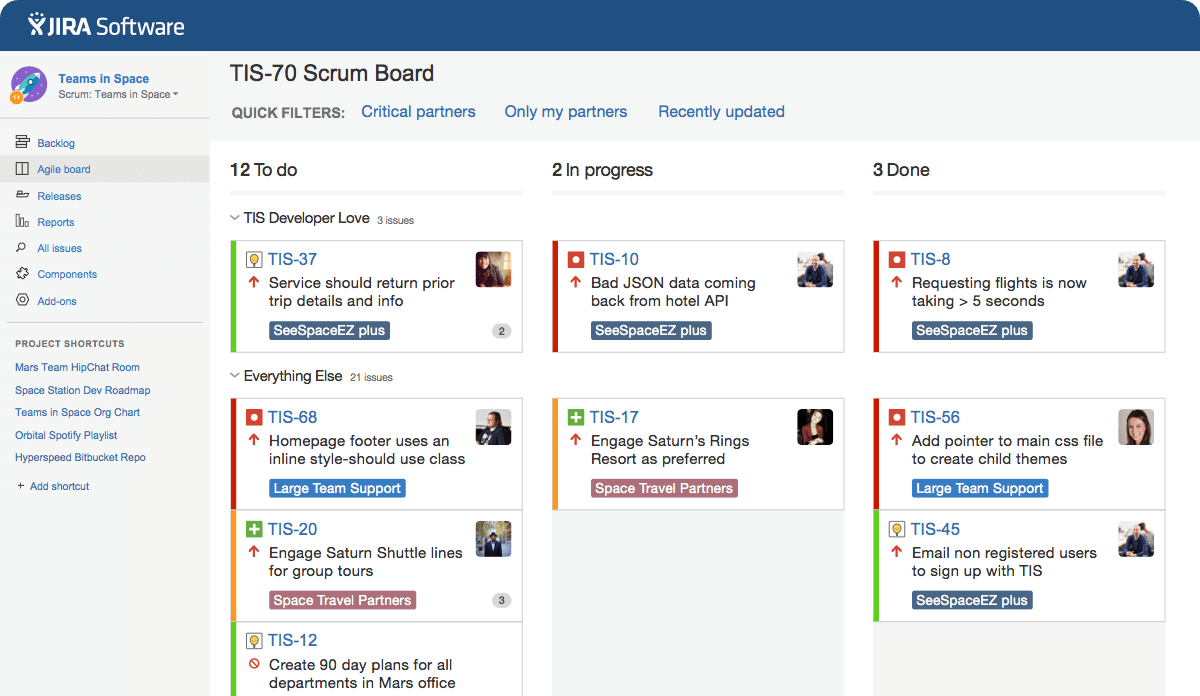
Top features:
- Projects can be readily divided into smaller units and visualized on a central board
- Customizable roadmaps and timelines ensure that next steps are always clear
- Status of every task can be checked at all times
- The platform contains a large number of pre-configured templates for various activities
Weak points:
- Designed primarily for use in the software development industry
- Capable administrator is required to prevent inconsistencies
Pricing: Free plan is offered, Standard plan costs $7.75 per user monthly, Premium costs $15.25 per user per month
Customer feedback:
- G2: 4.3 (5225 reviews)
- Capterra: 4.4 (13 151 reviews)
Status Hero
Remote teams function is fundamentally different ways than their office-based counterparts, so it’s only logical they need tools that can support decentralized processes and open new possibilities. Status Hero is an asynchronous communication app that aims to replace time-consuming meetings and reports with a more dynamic yet equally effective style of collaboration.
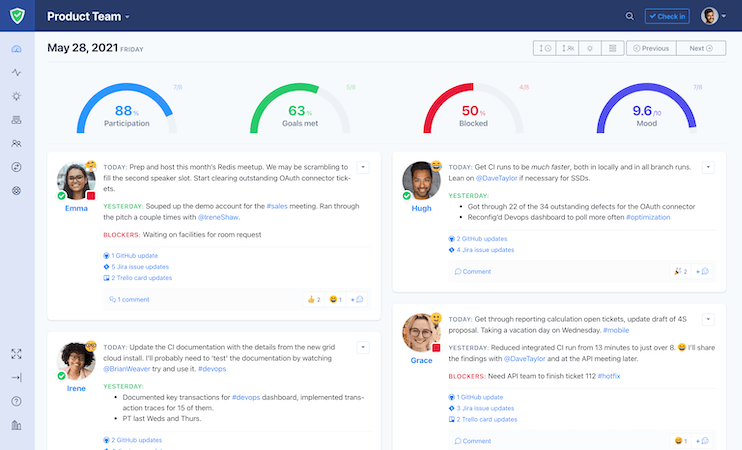
Status Hero Interface
Top features:
- Innovative solution for remote work based on asynchronous loops
- Goals and progress reports can be collectively updated
- Daily check-ins allow for precise attendance control without diminishing flexibility
- Any issues can be spotted directly from the dashboard and acted upon immediately
Weak points:
- This app lacks high-end scheduling and time tracking features
- Insufficient possibilities for direct one-on-one communication
Pricing: Standard package costs $6.99 monthly per user, Premium package requires $13.98 per user/month to obtain
Customer feedback:
- G2: 4.1 (11 reviews)
- Capterra: 5.0 (4 reviews)
Slack
Unofficially known as the #1 app for asynchronous communication in a business environment, Slack has been quietly picking up new users for a long time. This communication platform can be configured to support any kind of workflow, and it liberates team members by allowing them to chat or exchange documents at a pace that doesn’t disrupt their work or cause them too much stress.
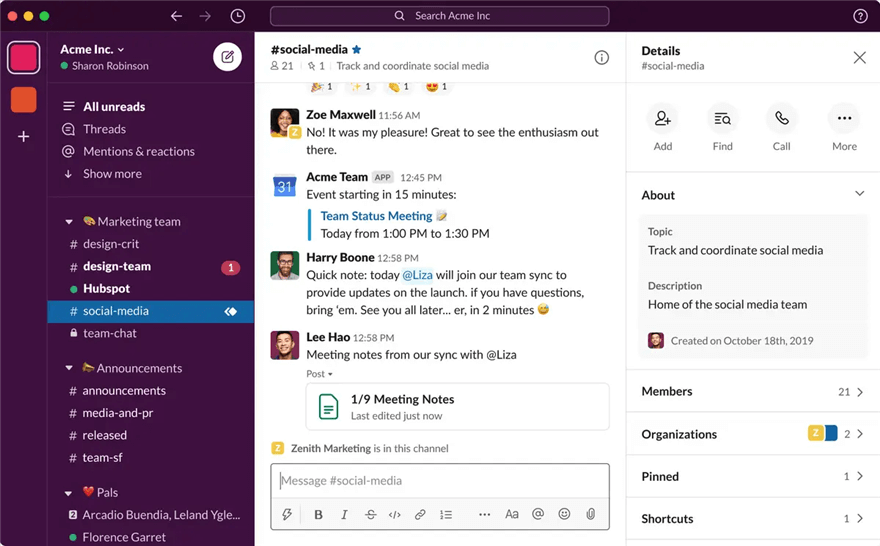
Slack Interface
Top features:
- Unified workspace that includes numerous collaboration and productivity tools
- Users can interact directly by chat or call, or create small groups to solve practical issues
- Asynchronous sharing of audio and video messages replaces frequent meetings
- Teams can create multiple channels to keep the communication on-topic
Weak points:
- Overabundance of options makes onboarding new users more difficult
- Mobile version is inferior to the web-based app
Pricing: Free plan is available, Pro plan costs $7.25 monthly per user, Business+ plan can be purchased for $12.50 per month/user
Customer feedback:
- G2: 4.5 (31 254 reviews)
- Capterra: 4.7 (22 907 reviews)
YAC
To combine the benefits of rich media sharing with the practicality of asynchronous conversations, you need a modern tool designed for the contemporary style of business. YAC meets this description to the letter and is increasingly recognized as a serious upgrade over the mainstream productivity platforms. If you are thinking about switching to asynchronous tools, this could be the one to try first.
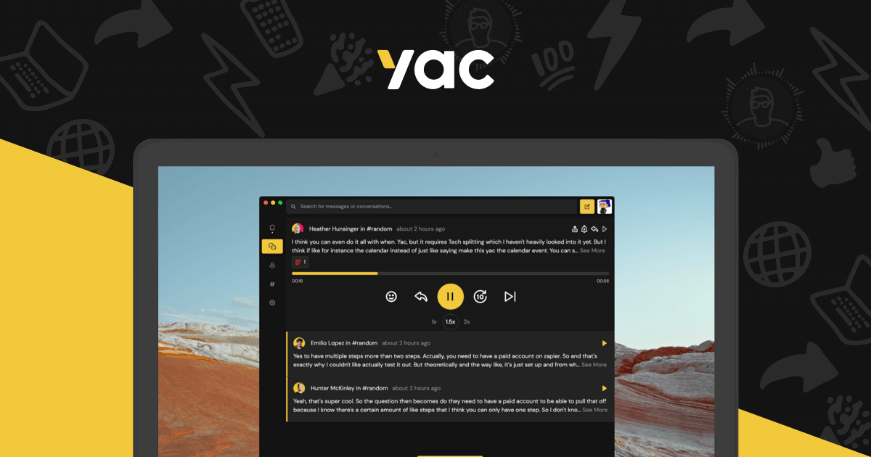
YAC Interface
Top features:
- Simple online service that smoothly facilitates asynchronous meetings between multiple users
- Discussions can include recorded audio messages, text, links, and more
- Screen sharing feature is useful for presentations and direct collaboration
- Private Teams feature restricts visibility between different conversations
Weak points:
- User interface follows a unique logic and requires an initial adjustment
- The transcripts of conversations are not always completely accurate
Pricing: Free version is available, YAC for teams costs $3 per user per month
Customer feedback:
- G2: 4.7 (29 reviews)
- Capterra: 4.7 (10 reviews)
Twist
In addition to offering an innovative way to centralize and classify information, Twist also empowers users to communicate in a more logical way. This software reduces the pressure on the workforce and helps to create a productive atmosphere where everyone can move at his own pace. Teams that value flexibility and distraction-free collaboration would be well-advised to try Twist.
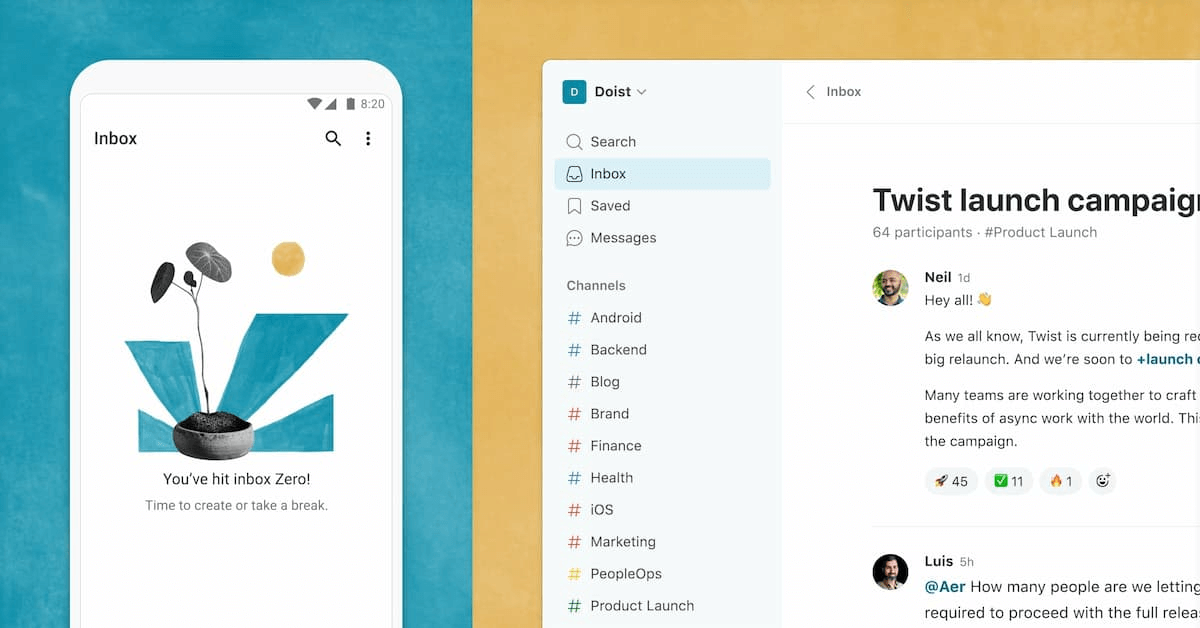
Twist Interface
Top features:
- Collaboration platform that replaces live meetings with asynchronous threads
- Threads can be organized into channels based on topics or participants
- Private messaging using GIF’s and emojis is possible
- The most important messages are always pushed to the top of a thread
Weak points:
- Messages or replies can sometimes get lost in a long thread
- The app lacks advanced brainstorming tools
Pricing: Free trial is available, unlimited version costs $6 per user per month
Customer feedback:
- G2: 3.9 (19 reviews)
- Capterra: 4.3 (34 reviews)
Frequently Asked Questions about Asynchronous Communication
Which media can be transferred by the means of asynchronous communication?
There are no limitations regarding which information format can be sent over the asynchronous communication apps. Most of the aforementioned tools can handle text, images, audio, and video – so the choice which media to use should be made based on the analysis of situation and context.
Are technical requirements for asynchronous communication higher or lower than for real-time communication?
Since there is no need to maintain a constantly high bitrate on both devices, apps that send asynchronous messages usually perform better with weaker hardware and slower broadband networks. This is one of the reasons why apps from this class typically have very broad applicability.
Are there free software solutions that can reliably support asynchronous communication?
There is no shortage of free communication platforms that include asynchronous tools, but the extent of their usability can be debated. Small teams could probably avoid spending money on such an application, but medium-sized and larger organizations would be wise to invest in a more advanced package that includes extra features.
Final Words
Once you learn the distinction between these two modes of communication, it’s not too difficult to analyze the needs of your company in this light and decide whether it would be beneficial to upgrade your internal communication infrastructure. This article lists several asynchronous solutions that improve productivity and scale very well, each coming with some unique features. New solutions of this kind could be released in the near future as well, so it’s wise to test the available options and keep an eye for new tools that could emerge as potential game changers.



